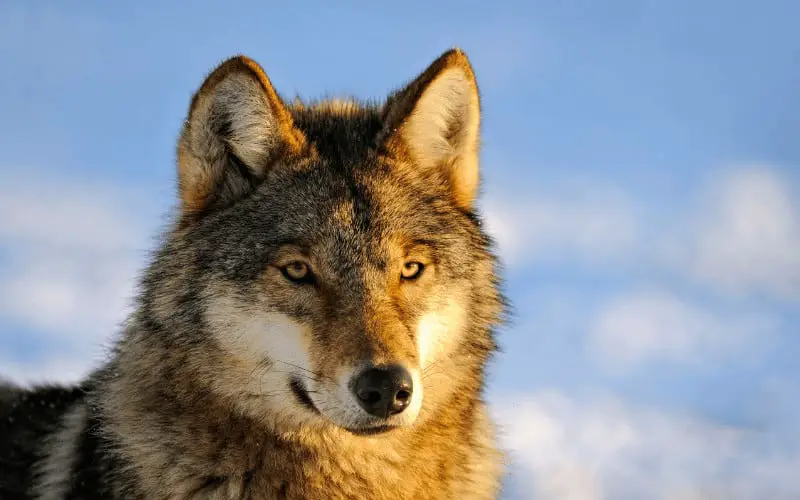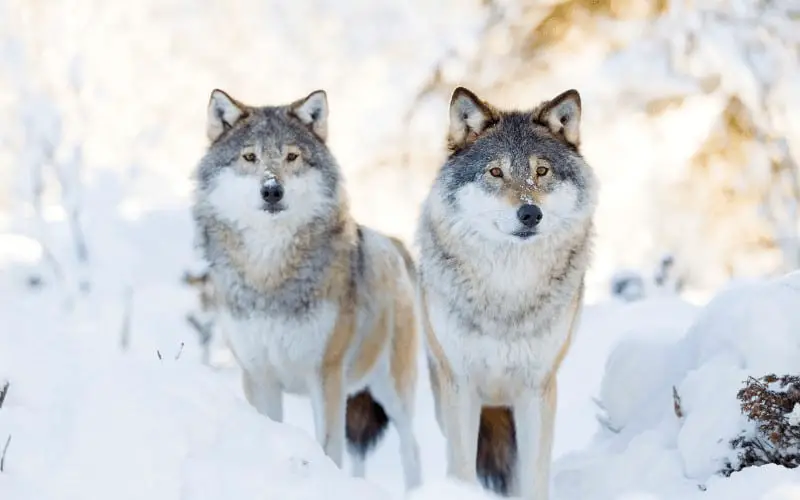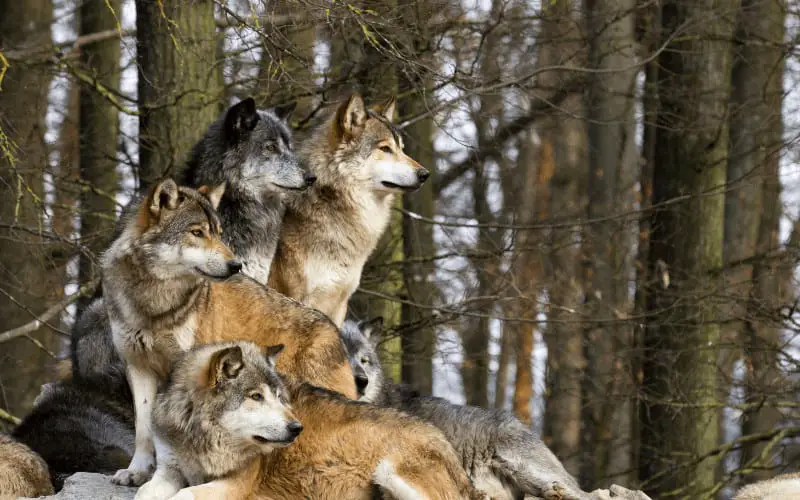Wouldn’t it be fantastic if we could just tame and domesticate wolves, so we could control them?
Besides, wolves are the predecessor of dogs – and dogs are our best friend. So, couldn’t we train wolves to be our friends also? Well, I think the correct question should be…can wolves be domesticated?
The short answer is that wolves are wild animals, and while they can be tamed, they cannot be domesticated due to several reasons, which we will discuss shortly.
There are some species of animals that can be easily domesticated, others tend to retain their wild instincts all their lives – and wolves belong to the second category.
Today, we’ll take a look at why you cannot domesticate wolves and why they can’t make good pets.
Can Wolves Be Domesticated?
Like I mentioned earlier, you cannot domesticate a wolf, but you can tame it, which means teaching it how to live with humans.
The taming process is usually easier if the wolf is still very much younger. But sadly, a tamed wild animal never loses its instincts, and those instincts usually win when they come into conflict with training.
Like other tamed wild animals such as coyotes, wolves can indeed become insanely dangerous, regardless of how well you train them.
You may think that wolves can be taken in as pets since they’re predecessors of dogs. According to research by the Royal Society Publishing, “wolf pups raised by humans can get attached to them; however, they can never turn into adorable human companions.”
Do Wolves Need Humans To Survive?

Wolves can typically survive and be happy without our help, so they don’t need us to survive. As they mature, these animals can cause severe injury to humans.
It’s worth mentioning that just like every higher form animal, wolves have a varied scope of personality. Some of them might make good pets, but many won’t.
If you do keep one as a pet, you must treat it like a wolf that it is, not like a dog. You must maintain alpha status at all costs, but respect the wolf in a way you’re not required to respect a dog.
Crossing the wrong line or making the wrong move may result in the wolf attacking you to either become the alpha.
Why You Cannot Keep Wolves as Pets
1. Wolves require a lot of space to roam
Grey wolves can live in areas of up to 100 square miles in the wild, while the Arctic sub-species will inhabit territories 3-10X that size.
They mostly depend on this large space to enjoy valuable resources such as water, food, and shelter, and this is the type of space humans cannot offer them.
2. Wolves eat a special diet
Wolves cannot process grains, unlike dogs whose digestive systems have been adapted over thousands of years. This means that wolves are unable to sustain a healthy life by eating dog food.
They are carnivores and need a raw meat diet to survive. I’m not talking about just meat, but bones, organs, as well as additional supplements to imitate things such as antlers, fur, feathers, and hooves that they would equally be consuming if they’re in the wild.
3. Wolves live in groups
In the wild, wolves live in groups known as “packs” – and they need this social structure to survive, especially in terms of hunting, guarding their territory, as well as raising and protecting their young.
Difference Between Dogs and Wolves (Dogs Vs Wolves)

Dogs seem to have instincts that make it easy to communicate with humans, according to some studies. For instance, if you’re with a dog and you point at something, the dog will look in the direction you’re pointing at, while a wolf will be looking at you.
Unlike dogs, even tame wolves will fail to socially communicate or react to humans, and treating them as dogs would be dangerous. So, you should always remember that wolves are not dogs – even the ones trained/raised by humans.
But according to Dorottya Ujfalussy from Eötvös Loránd University in Hungary, “wolves can become attached to their human caregivers.” But mind you, this study never said that humans should start training wolf puppies as pets.
When trying to compare between wolves and dogs, you should understand that they are arguably two different species. While dogs and wolves may look alike, they exhibit very different behavioral patterns.
Dogs have a natural affinity and affection towards us, with different studies proving that they’re happier around humans than they are with members of their own species.
Another research also indicated that dogs find comfort in the presence of humans when stressed – an attribute that’s been bolstered via domestication.
On the contrary, wolves are naturally scared of humans, they’re wary of our presence and environments – and they’re fiercely independent creatures, unlike dogs.
Read Also: Can Coyotes Be Domesticated?
Frequently Asked Questions
Can a person own a wolf?
No, owning a pure wolf in the United States is considered illegal. Wolves are classified as regulated and endangered species.
Although you can legally own a 98%/2% wolf-dog federally, but most states, counties, and cities in the US are gradually outlawing all wolves and wolf-dogs.
Can you tame a wolf as a pet?
Different scientist and animal rescue groups have found that wolves can be tamed if they are kept in a sanctuary that is large enough, and if they can find a mate.
Can you raise a wolf as a dog?
No, it’s very difficult to do so. No matter how you train or raise a wolf, it can never turn to a dog. Dogs and wolves are totally different species.
Are Wolves friendly towards humans?
No! Wolves generally stay away from human interactions – and it’s advisable to keep them in the wild where they belong.
Do wolves like being petted?
No, wolves do not really tolerate being touched by unfamiliar humans, unlike most dogs.
Can dogs kill wolves?
Yes, a dog that is large enough with strong protective instincts can kill a wolf. Examples of dogs that have the strength to kill wolves are the Irish Wolfhound, the Kangal, and the Alabai.

1 thought on “Can Wolves Be Domesticated? (3 Unpopular Wolf Facts)”